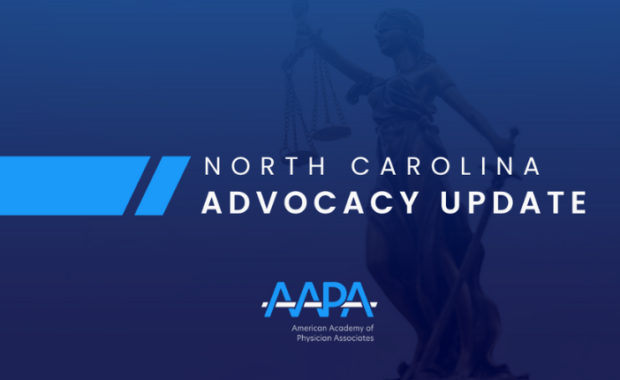Take Time for Your Patients and Yourself
PA Expert Answers Important Mental Health Questions

October 10, 2020
By Abby Boshart
Jay Somers, MA, PA-C, DFAAPA, is an accomplished PA leader and owner of an outpatient psychiatric practice in Las Vegas. He has served as president of both the Association of PAs in Psychiatry and the Nevada Academy of PAs and serves as an adjunct professor at Touro University, Seaton Hill University, and the University of Southern California. He is in the process of completing his Doctor of Health Science degree at A.T. Stills University with a focus on leadership and management.
Somers explored mental health issues and trends with his PA colleagues in a Huddle Ask Me Session on mental health. From navigating patient encounters to the effect of technology on mental health to provider burn-out – the conversation was wide-ranging and full of meaningful insights for all clinicians. Did you miss it? AAPA Members can check out the full conversation.
[Grow your network, find a mentor, and more – join or renew your membership today.]
Treating the entire patient
Clinicians treating patients experiencing mental health challenges must take several factors into account when determining a diagnosis or treatment path.
“Many of my discussions with my patients within a mental health setting have to do with defining ‘normal,’” says Somers. “I often ask, if somebody else was in the same circumstance as you are, do you think they would react like you are reacting now? If not, why? Many impairing problems in life present due to very reasonable environmental precipitators.”
Complex disease such as ADHD, anxiety, and depression may co-exist with similar disease states or isolated symptoms like inattention, hyperactivity, and impulsivity. When evaluating patients for ADHD, Somers points out it is essential to exhaust all other possible disorders and environmental factors.
Treatment of conditions like these can often be complicated by the remaining significant stigma surrounding mental health issues.
“Despite great efforts, and some strides over the past 30 years, mental health continues to be highly stigmatized in our society in a similar way to how obesity, HIV, STD’s or drug abuse is seen and moralized over.”
Somers says that those who have not experienced a major depressive episode may equate it to the temporary sadness, or lethargy, that everyone has experienced in their life. They cannot understand the severity of a major depressive episode or how difficult they are to overcome. Patients experiencing depression may view themselves as “less than” because they are unable to “get over it” as other people can.
When treating patients with these misbeliefs, Somers frames medications as one of the tools patients can use to get better. Framing treatment options as a choice a patient is making, rather than something they require because of their disorder, can empower them to take control of their health.
Technology: a source of disconnect?
As technology utilization has increased over the last few decades, many providers have seen progressively detrimental effects on patient mental health. Technology has made it easier than ever to communicate with others and yet self-reported feelings of loneliness and isolation have increased. Somers believes that technology has done amazing things and can be used productively, but that we all need to understand the dangers of distancing ourselves from personal contact with others. Cell phones and social media enhance this ability and so should be used with caution and awareness of their inherent dangers.
With all that said, technology does have an amazing ability to disseminate opinion and knowledge in a way that was not thought of 50 years ago. With the increase of digital familiarity across the population, parents and teachers are understanding more about the dangers, and risks, of social media and can better handle some of these issues with younger kids and teens that are exposed to these nuanced tools.
As many have seen, technology has also infiltrated healthcare in force with the wider implementation of electronic health records (EHRs) and E-visits. Somers notes the importance of these advancements and benefits of improving health access throughout the country. However, he cautions implementation teams to be wary of the subsequent loss of provider connection with their patient and the consequences of disturbing this established balance.
“I think we need to be cautious about how we use this expanded tool and make sure it does not blunt our ability to see the patient instead of the symptoms,” he says. “Personally, I have found it takes me longer to connect with my patients and feel what is really bothering them over the E-visit screen.”
An ideal focus for PAs
With increasing need for mental health providers, the specialty is strained for qualified clinicians. Somers says that PAs can, and indeed should, fill these gaps.
“This is a perfect role for the PA profession as it plays on our strengths as agile, diverse, highly educated health educators and clinicians with GREAT primary care backgrounds,” says Somers. “It also expands access to care for some of our most needed and vulnerable populations.”
PAs shouldn’t only focus on the mental health of their patients, they also need to focus time on themselves. Burnout has become a hot topic for PAs everywhere as healthcare continues to change rapidly and PAs as empathetic front facing clinicians feel this acutely. Somers says that despite recent coverage of provider burnout, it is not a new phenomenon. Although he does note that burnout rates appear to have skyrocketed over the past 20 years.
“There has clearly been provider burnout for as long as there has been healthcare,” Somers says. “Much of the research has pointed to the transformative effects of technology on healthcare and how it has fundamentally changed provider-patient relationships.”
PAs are feeling more disconnect from their patients, and as a result, less fulfilled by their everyday practice. To combat this, Somers cites research that suggests you should spend at least 20 percent of your week doing something that is deeply meaningful for you and you find personal purpose in — like interacting with patients, or maybe on a specific disease state or educational component.
“We went into medicine to connect with others and provide meaning in our lives, and it is hard to do that when filling out prior authorizations and pushing EMR buttons on a screen,” says Somers.
Regardless of your specialty, Somers encourages you to take time for yourself and focus on the things that you love about the PA profession.
“Medicine is changing, and we need to understand that our obligation is to ourselves and to our patients’ health and well-being,” says Somers.
Editor’s note: This article originally appeared in November 2018.
More Resources
Association of PAs in Psychiatry
PA Foundation Mental Health Outreach Fellowship
For more information, contact [email protected].
Thank you for reading AAPA’s News Central
You have 2 articles left this month. Create a free account to read more stories, or become a member for more access to exclusive benefits! Already have an account? Log in.



